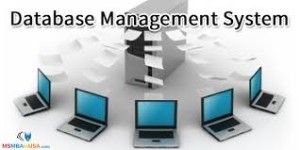 51. What is the difference between SQL Server 2000 complete and differential backups?
51. What is the difference between SQL Server 2000 complete and differential backups?
A complete backup makes a copy of the entire database. A differential backup makes a copy of the changes that have been made to the database since the last complete backup. A complete backup must be made before the first differential backup. Because differential backups are faster, they can be taken more frequently and the chance of data loss is reduced. Complete backups take longer but are slightly simpler to use for recovery.
52. Explain the meaning of each of the transaction levels supported by SQL Server.
The strictest isolation level is SERIALIZABLE. With it, SQL Server places a range lock on the rows that have been read. This level is the most expensive to use and should only be used when absolutely required. The next most restrictive level is REPEATABLE READ, which means SQL Server places and holds locks on all rows that are read. It is possible to make dirty reads by setting the isolation level to READ UNCOMMITTED, which is the least restrictive level. READ COMMITTED is the default isolation level.
53. Explain the difference between the SQL Server 2000 simple, full, and bulk-logged recovery models.
With the simple recovery model, no logging is done. The only way to recover a database is to restore the database to the last backup. With full recovery, all database changes are logged. With bulk-logged database recovery, all changes are logged except those that cause large log entries.
54. What is the difference between SQL Server 2000 clustered and nonclustered indexes?
With a clustered index, the data are stored in the bottom level of the index and in the same order as that index. With a nonclustered index, the bottom level of an index does not contain data; it contains pointers to the data. For data retrieval, clustered indexes are faster than nonclustered indexes.
55. What triggers does SQL Server 2000 support?
SQL Server 2000 supports INSTEAD OF and AFTER triggers only. There is no SQL Server support for BEFORE triggers. A table may have one or more AFTER triggers for insert, update and delete actions; AFTER triggers may not be assigned to views. A view or table may have at most one INSTEAD OF trigger for each triggering action of insert, update or delete.
56. What is the relationship of ODBC, OLE DB, and ADO?
Developed first, the ODBC standard is for relational databases; while the OLE DB standard provides functionality for both relational and other databases. Finally, ADO was developed to provide easier access to OLE DB data for the non-object-oriented programmer.
57. What are the three types of data sources used with ODBC?
An ODBC file data source is a file that can be shared among database users. A ODBC system data source is one that is local to a single computer. A ODBC user data source is only available to the user who created it.
58. What disadvantage of ODBC does OLE DB overcome?
By breaking the features and the functions of a DBMS into COM objects, OLE DB characteristic overcomes a major disadvantage of ODBC. With ODBC, a vendor must create an ODBC driver for almost all DBMS features and functions in order to participate in ODBC at all. This is a large task that requires a substantial initial investment. With OLE DB, however, a DBMS vendor can implement portions of their product.
59. What are to goals of OLE DB?
The major goals of OLE DB are to: (1) Create object interfaces for DBMS functionality pieces; (2) Increase flexibility for developers and users; (3) provide an object interface over any type of data; and (4) do not force data to be converted or moved from where it is.
60. In OLE DB, what is the difference between an interface and an implementation?
An OLE DB interface is specified by a set of objects, and the properties and methods that they expose, and OLE DB defines standardized interfaces. An object need not expose all of its properties and methods in a given interface. An OLE DB implementation defines how the object supports the interface. The implementation is completely hidden from the user. Thus developers of an object are free to change the implementation whenever they want, but they should not change the interface without consulting their users.